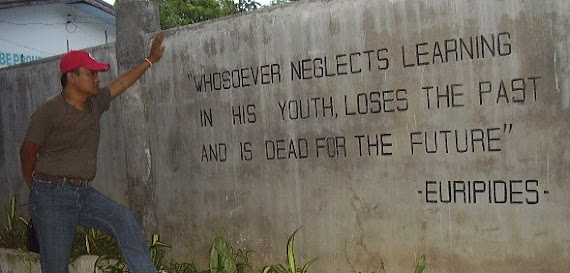The formal or official campaigning for local elections is on. The group of Cong. Nene Sato kicked off in Lubang while the team of Gov. Ed Gadiano had its opening salvo in his hometown in Sablayan on that same day of March 25, 2022. Thousands came to witness them. People from all walks of life including public officials and government employees like yours truly witnessed the motorcades and proclamation rallies.
Are government employees like me forbidden to air their political opinions or write or say something about politicians during the campaign period? Shall we stay at home when political sorties from whatever group are all around us? Nope.
(Disclaimer: I am not a lawyer and I am only getting this opinion as an advocate of free speech and expression and as a researcher. The 2018 column of election lawyer Atty. Emil Maranon III was my main reference in writing this blog post.)
My being a government employee does not hinder me from the enjoyment of such rights. Yes, the right to expression and free speech. Election season or not.
People cite Resolution 1600298 of the Civil Service Commission (CSC) and the Commission on Elections (COMELEC), the “Advisory on Electioneering and Partisan Political Activity” for all officers and employees of the government giving us stern warning that during election season, should keep our mouths (and pens) completely sealed as far as politicians and politics are concerned. They say that by doing such an act, we can be suspended or dismissed, imprisoned, disqualified from public office, and deprived of the right to vote.
But aside from Resolution 1600298 of the Civil Service Commission (CSC) and the Commission on Elections (COMELEC), the general policy on non-intervention of public officers and employees is also expressly laid down in the 1987 Constitution. Section 2 (4) Article IX-B provides that “no officer or employee in the civil service shall engage, directly or indirectly, in any electioneering or partisan political campaign.” CSC Memorandum Circular (M.C.) No. 30, s. 2009 enumerated partisan political activities that could be considered as electioneering or partisan political campaign that can be found in this article.
Implementing this, Section 55, Chapter 7 (Prohibitions) of Subtitle A of the Administrative Code of 1987, provides: “No officer or employee in the Civil Service including members of the Armed Forces, shall engage directly or indirectly in any partisan political activity or take part in any election except to vote nor shall he use his official authority or influence to coerce the political activity of any other person or body.” Under Sec. 264 of the Omnibus Election Code, any person found guilty of violating the above provision shall be punished with imprisonment of at least one year but not more than 6 years and shall not be subject to probation.
The truth is, the prohibition is not that absolute. There is no blanket prohibition on the matter.
Section 55, Chapter 7 (Prohibitions) of Subtitle A of the Administrative Code of 1987, for example, qualifies the prohibition to engage in partisan political activity with this:
“Nothing herein provided shall be understood to prevent any officer or employee from expressing his views on current political problems or issues, or from mentioning the names of candidates for public office whom he supports; provided, that public officers and employees holding political offices may take part in political and electoral activities, but it shall be unlawful for them to solicit contributions from their subordinates or subject them to any of the acts involving subordinates prohibited in the Election Code.”
Of course, like any other normal person, we could also go and hear campaign sorties or rallies, listen to their jingles and accept merch from politicians but we are prohibited atop the stage and campaign for them or distribute campaign paraphernalia for certain candidates, among others. That's a big no, no.
Section 79 of the Omnibus Election Code also provided for this qualification:
“Public expressions or opinions or discussions of probable issues in a forthcoming election or on attributes of or criticisms against probable candidates proposed to be nominated in a forthcoming political party convention shall not be construed as part of any election campaign or partisan political activity contemplated under this Article.” To reiterate, protected under the very law and the supreme law of the land is the upholding of the right to free speech and expression over whatever system of voting or election regulation.
Simply put, if one government employee would write/say/post would say s/he will vote for this candidate because s/he is good, it is okay because it was his or her personal opinion. But if the government employee says let us vote for this candidate because s/he is good, that is considered campaigning for a candidate therefore prohibited, and vice-versa.
Moreover, according to a joint circular issued by the CSC and the COMELEC just before the 2016 national and local elections, “social- media functions such as ‘liking,’ ‘commenting,’ ‘sharing,’ reposting, or following a candidate’s or party’s account,” would generally not be considered electioneering or partisan political activity.
Even a democratic exercise like elections cannot restrain us, civil servants, from our democratic rights to free expression.
Let us all listen to the candidates, make choices and express yourselves. Let us all be instruments of democracy and be a public servant for all regardless of political leanings and be learned participants in governance!
--------
(Photo: Gov. Ed and Cong Nene FB pages)







